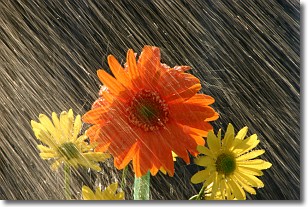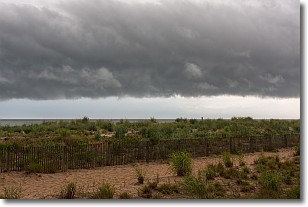Weather Alert in Arkansas
Flood Advisory issued May 24 at 9:13PM CDT until May 29 at 1:00AM CDT by NWS Little Rock AR
AREAS AFFECTED: Fulton, AR; Sharp, AR
DESCRIPTION: ...The Flood Advisory continues for the following river in Arkansas... Spring River At Hardy affecting Fulton and Sharp Counties. For the Spring River...including Hardy, Imboden...elevated river levels are forecast. * WHAT...Flooding caused by excessive rainfall continues. * WHERE...Spring River at Hardy. * WHEN...Until early Thursday morning. * IMPACTS...At 10.0 feet, Water is breaking out of the banks and flooding low lying areas along the river. * ADDITIONAL DETAILS... - At 8:45 PM CDT Saturday the stage was 8.4 feet. - Forecast...The river is expected to rise to a crest of 9.5 feet Monday evening (May 26), but remain just below minor flood stage. - Action stage is 8.0 feet. - Flood stage is 10.0 feet. - http://www.weather.gov/safety/flood
INSTRUCTION: If you encounter a flooded roadway, turn around and find an alternative route. Caution is urged when walking near riverbanks. If you are in the advisory area, remain alert to possible flooding or the possibility of the advisory being upgraded to a warning. River forecasts are based on current conditions and rainfall forecasted to occur over the next 24 hours. During periods of flooding...Evening forecasts are reissued with updated rainfall forecasts. Observed and forecasted stage data plots are available on our Advanced Hydrologic Prediction Service web page at... www.weather.gov/lzk Under the Current Conditions section...Select River and Lakes AHPS. The next statement will be issued Sunday evening at 915 PM CDT.
Want more detail? Get the Complete 7 Day and Night Detailed Forecast!
Current U.S. National Radar--Current
The Current National Weather Radar is shown below with a UTC Time (subtract 5 hours from UTC to get Eastern Time).

National Weather Forecast--Current
The Current National Weather Forecast and National Weather Map are shown below.

National Weather Forecast for Tomorrow
Tomorrow National Weather Forecast and Tomorrow National Weather Map are show below.

North America Water Vapor (Moisture)
This map shows recent moisture content over North America. Bright and colored areas show high moisture (ie, clouds); brown indicates very little moisture present; black indicates no moisture.

Weather Topic: What is Precipitation?
Home - Education - Precipitation - Precipitation
 Next Topic: Rain
Next Topic: Rain
Precipitation can refer to many different forms of water that
may fall from clouds. Precipitation occurs after a cloud has become saturated to
the point where its water particles are more dense than the air below the cloud.
In most cases, precipitation will reach the ground, but it is not uncommon for
precipitation to evaporate before it reaches the earth's surface.
When precipitation evaporates before it contacts the ground it is called Virga.
Graupel, hail, sleet, rain, drizzle, and snow are forms of precipitation, but fog
and mist are not considered precipitation because the water vapor which
constitutes them isn't dense enough to fall to the ground.
Next Topic: Rain
Weather Topic: What are Shelf Clouds?
Home - Education - Cloud Types - Shelf Clouds
 Next Topic: Sleet
Next Topic: Sleet
A shelf cloud is similar to a wall cloud, but forms at the front
of a storm cloud, instead of at the rear, where wall clouds form.
A shelf cloud is caused by a series of events set into motion by the advancing
storm; first, cool air settles along the ground where precipitation has just fallen.
As the cool air is brought in, the warmer air is displaced, and rises above it,
because it is less dense. When the warmer air reaches the bottom of the storm cloud,
it begins to cool again, and the resulting condensation is a visible shelf cloud.
Next Topic: Sleet
Current conditions powered by WeatherAPI.com




